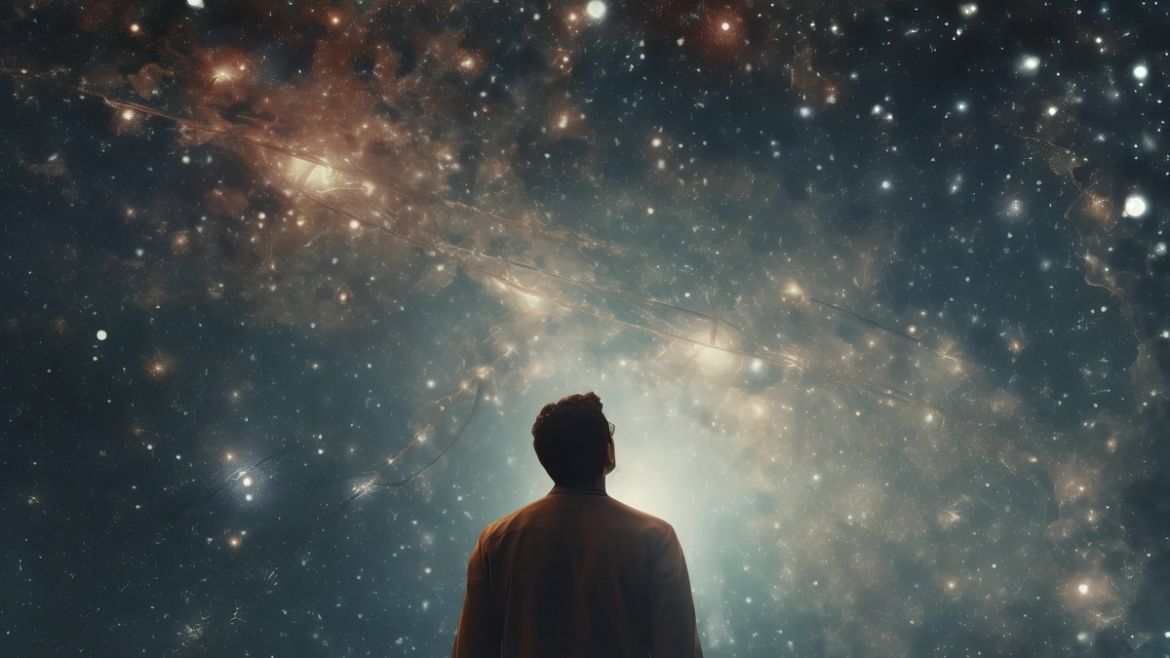Stand outside on a clear night and look up. How far can you see? How much can you see? Have you ever seen the Milky Way? On very special dark nights, if you live far enough from city lights, you can see a broad swatch of lights across the heavens. It’s a view in toward the center of our Milky Way galaxy, where the stars seem so close together that they blend into a milky white glow.
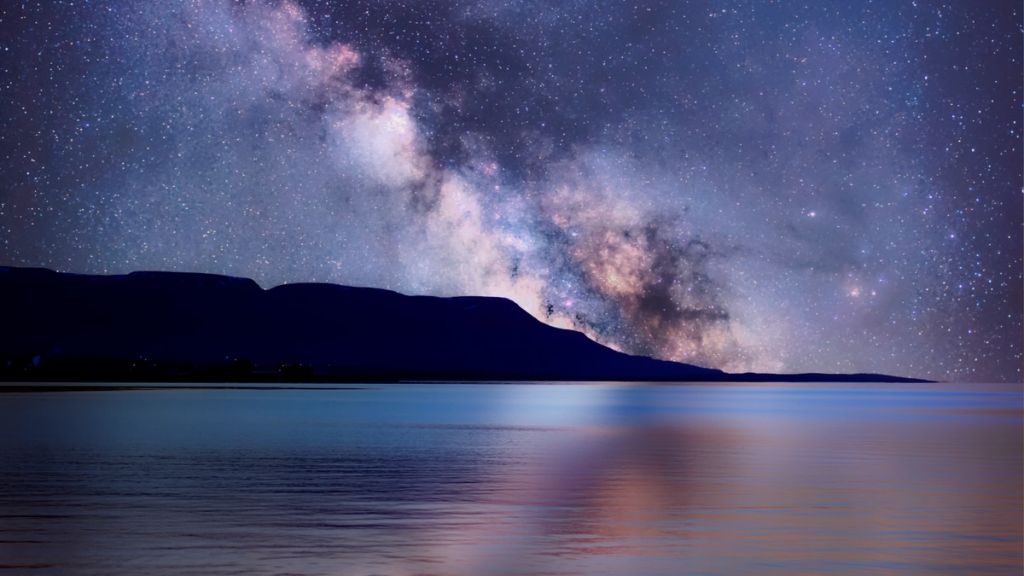
Since our solar system rotates around a pale star in one of our galaxy’s spiral arms, we are a long way from the center of the action. We’re in the suburbs of our own galaxy, a tiny spot in a sea of roughly two hundred billion stars.
Two hundred billion stars — but even on the darkest night with the clearest skies, our human eyes can only actually see about three thousand of them at any given moment. There are less than nine thousand stars visible from earth with the naked eye, and those are ‘nearby’ in our own Milky Way.
We used to think that the earth was the center of the universe, that the sun and all the stars rotated around it. But as soon as the telescope was invented, we discovered that we were wrong. Each time we’ve invented a stronger telescope, we’ve learned that the universe is bigger than we thought. We’ve discovered a universe so big that not just our little planet, or our weak sun, but our entire Milky Way galaxy is just a spot, a blip, barely worth noticing.
How big is the universe?
How big is the universe? Bigger than we think. Bigger than we can even imagine! Let’s see if we can wrap our minds around some of the numbers.
How far have you traveled in the last year? Twenty thousand miles? Fifty thousand? Many people who fly for business regularly travel one hundred thousand or more miles every year. We can easily see the moon when we look up into the sky—it’s only about two hundred fifty thousand miles away. We can also see the sun—although we shouldn’t look directly at it. It looks as if it is about the same size as the moon, but really it’s just a lot farther away—ninety-three million miles. It’s so far away that it takes sunlight over eight minutes to reach the earth!
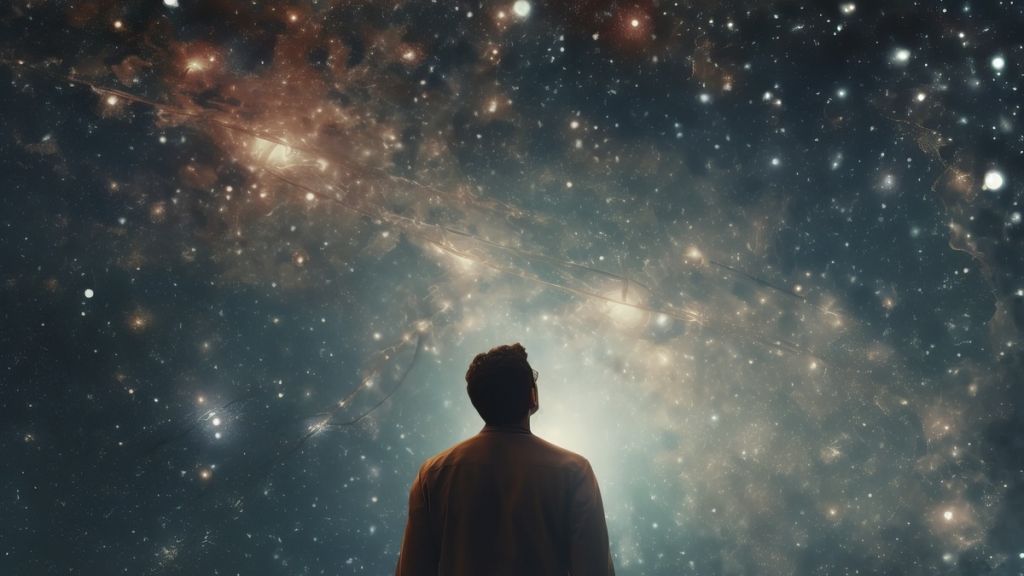
How big is the sun? About a million earths would fit inside it. If the earth were the size of a coin, the sun would be as big as a nine-foot beach ball. That is almost too big to imagine! The sun has to be the biggest thing in the universe, doesn’t it? Well, no.
The Orion Nebula
Have you ever looked up to see the constellation Orion the Hunter in the sky? Betelgeuse, the bright star on Orion’s top-left shoulder, is so big that if it was the star in our solar system instead of the sun, it wouldn’t fit into the big circle the earth makes when it circles the sun from ninety-three million miles away. It wouldn’t even fit inside the orbit of Jupiter—and that’s 484 million miles from the sun!
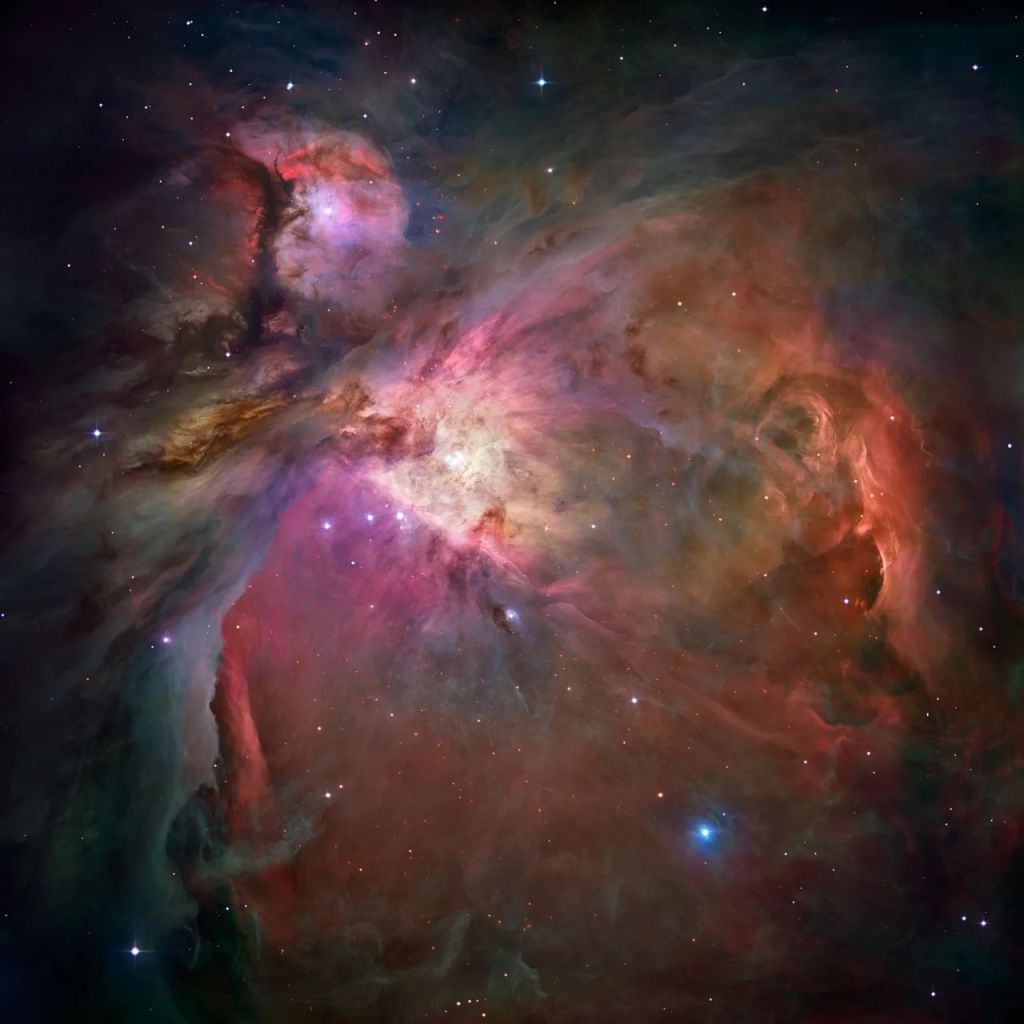
But the largest known star is called Canis Majoris. It’s so big that if earth was the size of a coin and if our sun was a nine-foot beach ball, Canis Majoris would be about two and a half miles wide! And if the earth was the size of a coin and the sun as large as a nine-foot ball, how far away would the sun be? About the length of a football field. In fact, if our entire solar system—the sun and all the planets—was the size of a coin, the sun would be visible only under a microscope, and the nearest star would be three hundred feet away. If you could travel at the speed of light—that’s 186,000 miles per second—it would still take one hundred thousand years just to travel across our galaxy!
If our whole galaxy was the size of a coin—remember, that’s two hundred billion stars—our solar system would be too small to be seen under a regular microscope. The other galaxies out there would still be from one foot to one thousand feet away.
So many galaxies! So many stars!
And how many other galaxies are there? In an attempt to see deeper in space than ever before, astronomers focused the Hubble telescope on a seemingly empty patch of the night sky. Empty — no visible stars, galaxies, or anything. They focused on nothing for eleven days, then carefully examined the photograph. In this tiny little spot — about 3 percent of the size of a full moon — they found more than ten thousand galaxies — not stars, but entire galaxies of stars — each with billions of stars.
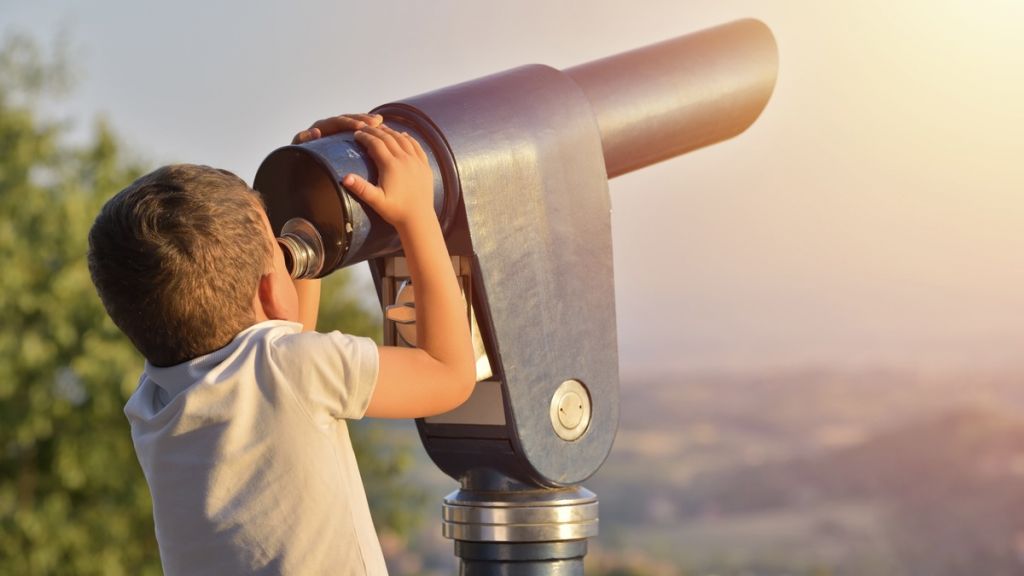
When they focused the Hubble telescope there for twenty-three days, they found that they could see even more galaxies — almost twice as many. Based on these deep field studies, astronomers estimate that there at least 175 billion galaxies within their current view from earth. How many stars would that be? If we consider our galaxy’s two hundred billion to be average, there are something like 350,000,000,000,000,000,000,000 stars by my calculation. Until we develop the technology to see deeper or farther into space, anyway. (http://blogs.discovermagazine.com/crux/2012/10/10/how-many-galaxies- are-there-in-the-universe-the-redder-we-look-the-more-we-see/)

Think about it this way: the next time you’re on the beach, pick up a handful of sand. If the estimates are right, there are more stars in the universe than there are grains of sand on all the beaches in the world. What we see when we look up — it’s only a handful of sand.
We’ve certainly learned that earth is not the center of the universe. But for many years we’ve wondered whether or not earth was unique — whether it was the only planet in the whole universe. Recently, we’ve learned that most star systems have planets. In our galaxy alone, the estimate is that there are more than a billion planets. (http://www.jpl.nasa.gov/news/news.php?release=2013-002.)
How many of those planets have animals or plants of some kind? We don’t know the answer to that question yet. And could there be intelligent life on some other planet? That’s the big question all astronomers are asking.
The wonders of the universe are beyond imagination!
And we haven’t even mentioned nebulas, quasars, black holes, or any of the many other fascinating objects in our universe. Can it really all have come into existence accidentally?
Journey of discovery
And it’s a bigger question than just the universe—what about the astounding wonders of life around us here on earth? And the wonders of our own human bodies? There are more neuron cells in your brain than there are stars in our galaxy!

In this book, we will explore the wonders of not only life around us but also the wonder of our own existence. Some people believe that science offers all the answers we seek. But many find that scientific searches leave an empty space in their hearts.
Since the earliest days of human history, people have struggled with the big questions of life. Why are we here? Where are we going? What happens to us when we die? Why is there so much evil and suffering in the world?
Science isn’t asking these questions. It doesn’t offer answers for some of the deepest longings of the human heart. But that doesn’t mean that those answers can’t be found.
Come along on a journey of discovery, a journey to seek out the wonders around us, to learn what ties those amazing things together. Come and discover not only life that we may have never imagined, but even more remarkable, a love that is beyond imagination.
The content of this post is taken from Beyond Imagination — There is more to life than we know, by John T. Baldwin, L. James Gibson and Jerry D. Thomas.


